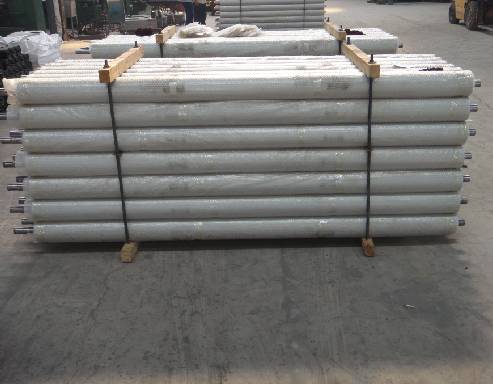 Afrikaans
Afrikaans  Albanian
Albanian  Amharic
Amharic  Arabic
Arabic  Armenian
Armenian  Azerbaijani
Azerbaijani  Basque
Basque  Belarusian
Belarusian  Bengali
Bengali  Bosnian
Bosnian  Bulgarian
Bulgarian  Catalan
Catalan  Cebuano
Cebuano  Corsican
Corsican  Croatian
Croatian  Czech
Czech  Danish
Danish  Dutch
Dutch  English
English  Esperanto
Esperanto  Estonian
Estonian  Finnish
Finnish  French
French  Frisian
Frisian  Galician
Galician  Georgian
Georgian  German
German  Greek
Greek  Gujarati
Gujarati  Haitian Creole
Haitian Creole  hausa
hausa  hawaiian
hawaiian  Hebrew
Hebrew  Hindi
Hindi  Miao
Miao  Hungarian
Hungarian  Icelandic
Icelandic  igbo
igbo  Indonesian
Indonesian  irish
irish  Italian
Italian  Japanese
Japanese  Javanese
Javanese  Kannada
Kannada  kazakh
kazakh  Khmer
Khmer  Rwandese
Rwandese  Korean
Korean  Kurdish
Kurdish  Kyrgyz
Kyrgyz  Lao
Lao  Latin
Latin  Latvian
Latvian  Lithuanian
Lithuanian  Luxembourgish
Luxembourgish  Macedonian
Macedonian  Malgashi
Malgashi  Malay
Malay  Malayalam
Malayalam  Maltese
Maltese  Maori
Maori  Marathi
Marathi  Mongolian
Mongolian  Myanmar
Myanmar  Nepali
Nepali  Norwegian
Norwegian  Norwegian
Norwegian  Occitan
Occitan  Pashto
Pashto  Persian
Persian  Polish
Polish  Portuguese
Portuguese  Punjabi
Punjabi  Romanian
Romanian  Russian
Russian  Samoan
Samoan  Scottish Gaelic
Scottish Gaelic  Serbian
Serbian  Sesotho
Sesotho  Shona
Shona  Sindhi
Sindhi  Sinhala
Sinhala  Slovak
Slovak  Slovenian
Slovenian  Somali
Somali  Spanish
Spanish  Sundanese
Sundanese  Swahili
Swahili  Swedish
Swedish  Tagalog
Tagalog  Tajik
Tajik  Tamil
Tamil  Tatar
Tatar  Telugu
Telugu  Thai
Thai  Turkish
Turkish  Turkmen
Turkmen  Ukrainian
Ukrainian  Urdu
Urdu  Uighur
Uighur  Uzbek
Uzbek  Vietnamese
Vietnamese  Welsh
Welsh  Bantu
Bantu  Yiddish
Yiddish  Yoruba
Yoruba  Zulu
Zulu Vertical Guide Rollers for Enhanced Stability and Precision in Material Handling Systems
The Importance of Vertical Guide Rollers in Modern Manufacturing
In the realm of modern manufacturing and engineering, precision and efficiency are critical. One component that plays a vital role in achieving these goals is the vertical guide roller. This seemingly simple device is integral to a variety of applications, from conveyor systems to automated machinery. Understanding the function and advantages of vertical guide rollers can significantly impact operational performance in various industries.
What are Vertical Guide Rollers?
Vertical guide rollers are mechanical components designed to facilitate the smooth movement of machinery and materials. Typically mounted in a vertical orientation, these rollers support and guide items as they move through a manufacturing process. By reducing friction and wear, vertical guide rollers enhance efficiency, allowing for faster production rates and longer equipment life.
Design and Functionality
Vertical guide rollers are constructed from various materials, including plastic, steel, and ceramic, depending on the application's specific requirements. They can be designed in numerous shapes and sizes, accommodating everything from heavy industrial equipment to delicate handling systems. The primary function of a vertical guide roller is to provide a stable and reliable pathway for objects, ensuring that they remain on track during transportation or processing.
Factors such as load capacity, speed, and environmental conditions are crucial when choosing the right vertical guide roller. For instance, a roller used in food manufacturing may need to be made from food-grade materials, while one employed in heavy machinery must be capable of supporting significant weight without deformation.
Applications in Industry
vertical guide rollers

The versatility of vertical guide rollers makes them suitable for numerous applications. In the automotive industry, they are often used in assembly lines, guiding the movement of parts through various stages of production. In packaging, vertical guide rollers facilitate the seamless flow of products, enabling efficient packing and shipping processes.
Moreover, vertical guide rollers are essential in conveyor systems, providing stability as items are transported from one location to another. They also find use in elevator and escalator systems, where they help maintain smooth and controlled movement. The importance of reliable vertical guide rollers cannot be overstated, as their failure can result in production delays and increased maintenance costs.
Advantages of Using Vertical Guide Rollers
The benefits of incorporating vertical guide rollers into manufacturing processes are manifold. First and foremost, they enhance efficiency and productivity by ensuring smooth operation. By minimizing friction between moving parts, these rollers reduce energy consumption, contributing to cost savings.
Secondly, vertical guide rollers improve the safety of machinery. By providing a stable path for movement, they help prevent accidents caused by misaligned components. This is particularly important in high-speed manufacturing environments, where even minor misalignments can lead to significant hazards.
Furthermore, these rollers are designed for longevity. With proper maintenance, vertical guide rollers can significantly extend the lifespan of machinery, reducing the frequency of replacements and associated costs.
Conclusion
In conclusion, vertical guide rollers are a crucial component in the landscape of modern manufacturing and engineering. Their ability to facilitate smooth movement, improve safety, and enhance productivity makes them indispensable in numerous applications. As industries continue to evolve, the importance of reliable and efficient components like vertical guide rollers will only grow. Organizations that invest in high-quality rollers and understand their significance will likely achieve a competitive edge in an increasingly demanding market. Whether it's in automotive assembly, packaging, or material handling, vertical guide rollers will continue to play a pivotal role in driving the efficiency and effectiveness of manufacturing processes.
-
Revolutionizing Conveyor Reliability with Advanced Rubber Lagging PulleysNewsJul.22,2025
-
Powering Precision and Durability with Expert Manufacturers of Conveyor ComponentsNewsJul.22,2025
-
Optimizing Conveyor Systems with Advanced Conveyor AccessoriesNewsJul.22,2025
-
Maximize Conveyor Efficiency with Quality Conveyor Idler PulleysNewsJul.22,2025
-
Future-Proof Your Conveyor System with High-Performance Polyurethane RollerNewsJul.22,2025
-
Driving Efficiency Forward with Quality Idlers and RollersNewsJul.22,2025





























